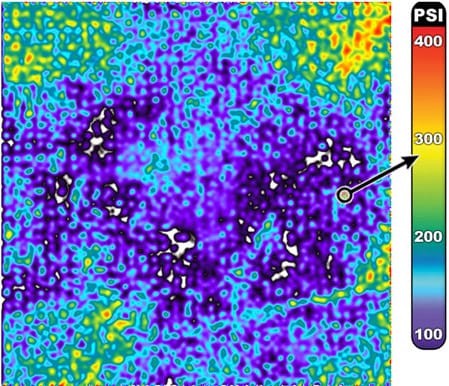A heat sink is a tool that transfers heat away from a hotter object. Commonly, heat sinks are used to cool materials that have been welded or soldered. They are also used to cool electronic assemblies.
Heat Sink Pressure is the pressure between a heat sink and the object being cooled by it. Ideally, there will be uniform pressure exerted at the interface between the heat sink and the object being cooled. However, due to surface conditions, lack of parallelism, and other factors, this is often not the case. If the heat sink pressure is non-uniform, the effective contact area is reduced. Since the heat conducted is directly proportional to the area of the interface, the non-uniformity will result in inefficient heat conduction.
Manufacturers often use thermal compounds to avoid the effects of pressure variations. These materials are sticky pastes that are applied directly to the heat sink. Unfortunately, they are very messy and not suitable for production operations. Another solution is the use of thermal pads. These are most effective when they are compressed between the heat sink and the part being cooled.
Sensor Products has developed Fujifilm Prescale®, a pressure indicating film, which is an effective method to diagnose heat sink pressure variations. Fujifilm Prescale® is a Mylar-based film that contains a layer of tiny microcapsules. The application of force upon the film causes the microcapsules to rupture, producing an instantaneous and permanent high resolution topographical image of pressure variation across the contact area.
Simply place Fujifilm Prescale® between the heat sink and the part being cooled (Fig 1). Apply pressure, remove it, and immediately the film reveals the pressure distribution profile that occurred between the two surfaces (Fig 2). Conceptually similar to Litmus paper, the color intensity of Fujifilm Prescale® is directly related to the amount of pressure applied to it. The pressure image can be subsequently analyzed using Topaq® to highlight the pressure differences (Fig 3).
 |  |  |
| Fig 1: Fujifilm Prescale® Placed Between Heat Sink and Part Being Cooled. | Fig 2: Heat Sink Pressure Image Captured with Fujifilm Prescale® Film. | Fig 3: Pressure Image After Topaq® Analysis |
By using the disposable, one-time use pressure indicating film, Fujifilm Prescale®, evaluating heat sink pressure distribution and magnitude is accurate, quick, and highly economical. This will help guide manufacturers as to whether to use messy thermal compounds or thermal pads in their production operations.
When the bolts are tightened, they stretch, acting like springs pressing upon the assembly. The resulting spring force holds the joint together. Assembly procedures routinely specify torque values for tightening the bolts. Such values are commonly determined by trial and error because it is difficult to measure the force exerted by the bolts directly. However, Fujifilm Prescale® pressure indication film is frequently used to show the pressure effects of the bolt force.
Simply place Fujifilm Prescale® pressure indicating sensor film between any two surfaces that touch, mate or impact. Apply pressure, remove it and immediately the film reveals the pressure distribution profile that occurred between the two surfaces. Conceptually similar to Litmus paper, the color intensity of Fujifilm Prescale® is directly related to the amount of pressure applied to it. The color intensity is directly proportional to the applied pressure. This is illustrated by Figure 2.


